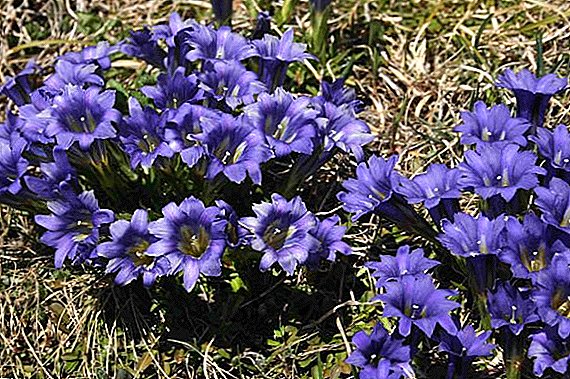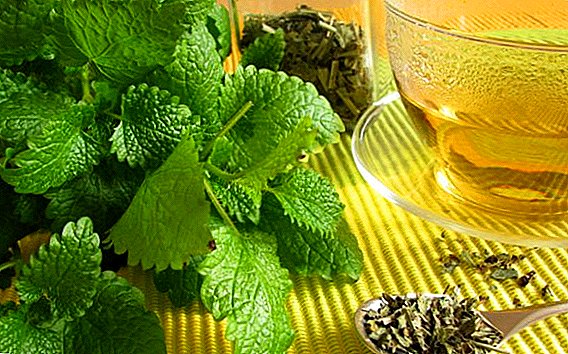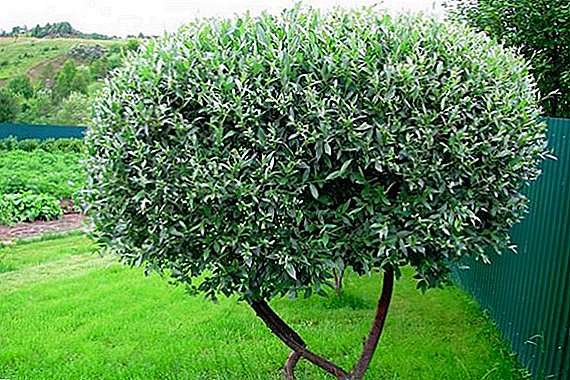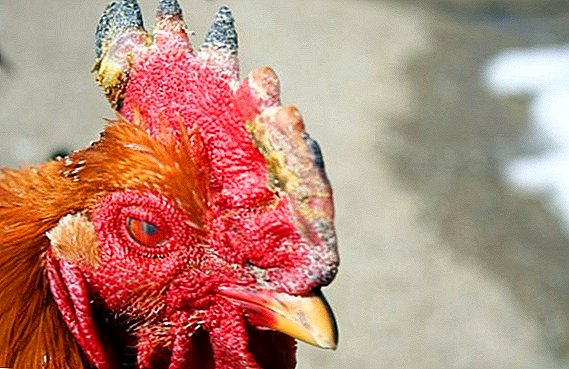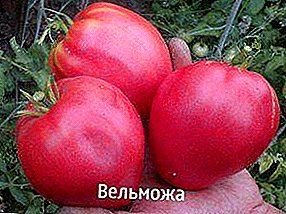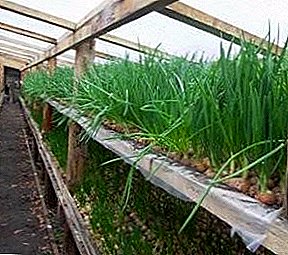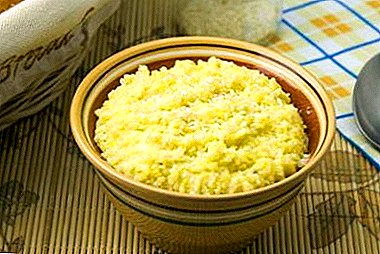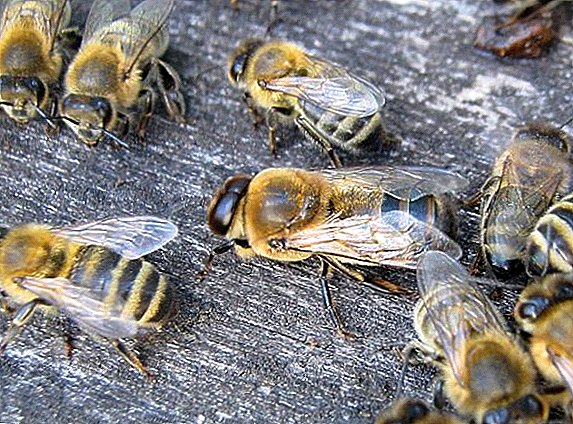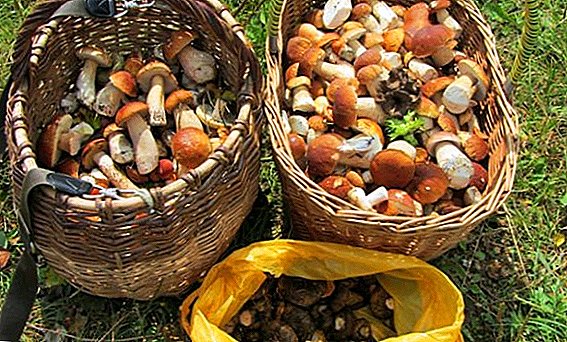 About mushroom glory Moscow region have heard everything. But what species exactly grow in the surrounding forests, when and how to collect them correctly - few people know. Meanwhile, the campaign for mushrooms is also a portion of fresh air, coupled with a feeling of oneness with nature, which many people lack in everyday bustle. Find out what the gifts of the forest is ready to share this region.
About mushroom glory Moscow region have heard everything. But what species exactly grow in the surrounding forests, when and how to collect them correctly - few people know. Meanwhile, the campaign for mushrooms is also a portion of fresh air, coupled with a feeling of oneness with nature, which many people lack in everyday bustle. Find out what the gifts of the forest is ready to share this region.
Edible and Conditionally Edible Mushrooms
First, let's find out what edible and conditionally edible species look like. The latter are distinguished by the fact that they are necessarily processed before use - depending on the type of fungus, it can be boiling in several approaches or roasting.

But let us begin with a brief review of the “fully” edible gifts of the forest, which are found in the forests of the Moscow region.
Check out the list of edible and poisonous mushrooms, as well as learn how to check the mushrooms for edibility by folk methods.
White mushroom
Other names: boletus, belevik, grandmother, good-natured, bear-bear, mullein, forge.

Mushroom pickers know that white mushrooms come in several varieties. But in this region there are only pine.
The white mushroom belongs to the genus Boletus, so we advise you to find out what are the types of white mushrooms and boletus, as well as what properties the white mushroom has.
How to find out:
- a hat - large (6-30 cm in diameter), with fine wrinkles and tubercles. It is brown in color, darkening in the center (reddish or purple tones are less common). In young specimens, semicircular, over time becomes slightly convex or flat;
- leg - with the extension from top to bottom, with a height of 8 to 17 cm, with visible tubercles or mesh pattern;
- the pulp - fleshy and dense, with a noticeable smell of roasted walnut (white at the place of cutting).
From the name it is clear that such mushrooms grow near pines. (less often - at chestnuts and oaks, beeches and fir-trees). There are both singly and in groups.

This is one of the most delicious types of mushrooms, which is eaten in almost any form - fried and dried, as an ingredient in soups. True, only young copies are used - old ones can be wormy.
Important! The most delicious are "hare", growing in spruce-birch forests.The best time to collect: the end of July-early October.
Wolves
How to find out:

- a hat - pale pink, with grayish or yellow (less often white) overflow. Diameter - 4-12 cm. Alternating light and dark stripes, the size of which may vary, are striking;
- leg - thin (1-2 cm in girth) and low (up to 6-7 cm), a regular cylindrical shape. Very firm, smooth to the touch. In older specimens often becomes hollow. Regardless of age, there may be small dark pits on the surface;
- the pulp - pale pink, dense and dry, with a characteristic spicy taste.
The best time to collect is the end of June-October. But in this interval there are two waves - the very end of July and the end of August-the first decade of September.

In its raw form is very eater, but with a noticeable bitterness, which disappears during cooking. It is used for the preparation of pickles and marinades, freshly made waves are served in second courses (although they require prior soaking and blanching).
We suggest to read more about such edible mushrooms as volnushki.
Real bum
It is the best of conditionally edible mushrooms.
Other names: white gruzd, raw gruzd, wet gruzd.

How to find out:
- a hat - white or slightly yellowish, with a diameter of 6-25 cm. In the “young” it is flat, with a depression in the center with age. Wet and sticky to the touch, with a gun fired on the inner edge. There is always a lot of vegetable garbage stuck to the surface;
- leg - cylindrical and hollow inside, white or yellowish. Height - 3-10 cm;
- the pulp - white color, strong and dense. It has a special smell, similar to a fruity aroma. The milky juice is also white, but it turns gray-yellow in the air.
Did you know? Some seemingly peaceful mushrooms are also predators: they feed on nematodes stuck in the mycelium rings.Favorite locations - deciduous and mixed forests, linden arrays. Caught infrequently, although they grow abundantly.
The best time to collect is mid-July-September.

After removing the bitterness by soaking daily with the change of water, these mushrooms are usually allowed for salting - the mushrooms are juicy and with an appetizing aroma. Having stayed in a container with spices for one and a half months, they become usable.
We recommend that you find out what types of milk mushrooms there are, how useful these mushrooms are, and also learn how to collect and stock aspen wood and whether it is possible to use black milk mushrooms.
Bum yellow
Other names: yellow wave, yellow load, scratched.
How to find out:

- a hat - large (6-29 cm in diameter), often with small scales. The color is yellow, but there are instances with a brown or even golden tone. Smooth to the touch, with bent edges. On young mushrooms, it is convex, but then becomes flat or concave;
- leg - strong, with noticeable notches or fossa yellow. To the touch sticky, and inside hollow. Height - 5-12 cm;
- the pulp - white, with a subtle pleasant aroma, reminiscent of fruity. Over the cut yellow.
Important! Inedible types of mildew emit lilac lilac color.
The best time to collect is the second decade of July-October.
After boiling or soaking, it is used to cook pickles and marinade.
Raincoats
This is one of the most common mushrooms. Representatives of a meadow variety most often come across to Moscow suburbs.

Other names: flitter, wolf tobacco, grandfather tobacco.
You will probably be interested to know what a rain cover mushroom looks like.
How to find out:
- a hat White or white-brown color has the shape of a ball with a diameter of 2-5 cm. In young raincoats it is covered with small spikes, which are then washed off. The whole color changes with age - it becomes yellowish or light brown. The tip is slightly flattened;
- leg - thick and wrinkled, up to 1.5 cm high;
- the pulp - white, with a septum in the form of a diaphragm, white and with a noticeable pleasant smell.
The best time to collect is early July-October.

Only young raincoats are eaten, which, after roasting, resemble meat (they are not suitable for soups - when added, liquid dishes acquire a “rubbery” flavor).
Read also about the beneficial properties and application in various branches of mushrooms: flake, cheesy, reishi, svinushki, shiitake, chaga (birch fungus) mushrooms.
Dubovik
In this region, there is only one species of dubovik, namely speckled.

Other names: grained-fronted boletus, bruise, boletus poddubovikovy, redpede
Did you know? During the growth period, the intracellular (it’s turgor) pressure of the fungus is as much as 7 atmospheres.
How to find out:
- a hat - velvety to the touch, in the form of a hemisphere or pillow. Color - dark brown, black-brown, chestnut. Darkens when pressed. In the girth - from 7 to 23 cm;
- leg - red and yellow, with a grid ornament or dots. Thick, has a barrel-shaped or cylindrical shape, tapers upward. Height: 6-16 cm;
- the pulp - bright yellow or orange, without any special flavor or taste. Changes the color of the slice, becoming blue or bluish.
The best time to collect is the end of May and the beginning of October.

After boiling (10-15 minutes), dubovik pickled, also often used for drying.
Read more about this kind of mushroom as dubovik.
Goat
Another name: lattice.

How to find out:
- a hat - young goatlings are slightly bloated, but as they grow, they become flat. The color is reddish, brown or brown (reddish tone is considered a rarity). Smooth to the touch, no tubercles. Diameter - 3.5-12 cm;
- leg - in the form of a cylinder, very dense and solid. Color repeats the color of the cap, but with a matte shade. Dimensions - 4-10 cm in height and 1-2 in girth;
- the pulp - brown or yellow (pinking on the fracture), odorless.
Important! Kozlyak is famous for its powerful antibacterial action. True, with problems with digestion, its reception will have to be abandoned.
The best time to collect is mid-August-late September.

After a short heat treatment, it is used for cooking zazharki, in small quantities is added to soups. Due to low taste, it is not used for salting.
Read also what characteristics of edible goat mushrooms are.
Chanterelles
Another name: chanterelle real.

How to find out:
- a hat - medium (2-12 cm), orange or yellow. Differs irregular shape: convex or concave, stretched or in the form of a funnel;
- leg - solid and dense, strongly grows together with a cap. Often repeats its color or has a lighter shade. With a height of 4-7 cm has a diameter of 1-3 cm. Visibly narrowed downwards;
- the pulp - fleshy, white in the middle and yellow at the edges. The taste is sour, the smell varies from slightly fruity to root. By the cut red.
The best time to collect is the first call - the beginning of June, the second wave - the middle of August-October.

Chanterelles are considered a delicacy and are used in any form - they decorate almost all dishes and side dishes.
Find out where chanterelles grow and how they are beneficial for the human body.
Maslata
In the expanses of the Moscow region, three types of oil can be found at once - ordinary, larch and yellow-brown. Each of these lines deserves a separate description.
Let's start with the most massive - boletus ordinary.

Other names: oiler yellow, real oiler, autumn oiler.
Did you know? Sex chromosomes of mushrooms resemble human ones in many respects.
How to find out:
- a hat - Has the shape of a hemisphere (in young boletus) or a flatter appearance, sometimes with raised edges. Coloring - from brown with a chocolate shade to yellow-brown (as an option - a gray-olive). Diameter - 3-15 cm;
- leg - cylindrical and solid, with longitudinal fibers and a filmy ring of white or brownish color. The basic tone is slightly lighter than the color of the cap. Height - 3-12 cm, thickness - 1-3;
- the pulp - juicy, slightly brown at the base, yellowish on top, and brown under the cap itself.

The best time to collect is mid-September to late October.
After removing the skin from the cap and boiling for 10-15 minutes can be used in any form. Although before drying the cap is not cleaned so that the oil does not darken.
We recommend that you find out how the boars look like, how to distinguish false boars and how useful boars are.
But there is a not entirely pleasant feature: it is the caps that are most often damaged by insects, which makes them unsuitable for food.
Next in line is the larch oil can.
How to find out:

- a hat - convex or prostrate, smooth and sticky. Color options: from lemon and yellow to brown-brown. Diameter - 3-13 cm;
- leg - solid and thick, in the form of a cylinder, sometimes in the form of a mace. From above granular and mesh, with a ring of lemon color. The basic tone duplicates the color of the cap (red-brown shade - a rarity). Height - 4-12, thickness - up to 3 cm;
- the pulp - soft, fibrous and juicy, light yellow or brown. In young butters, the cut point does not change in color, while in older ones it slightly turns pink and turns brown.
Important! During the fruiting season, the peak yield of oil is accounted for 3 days after rain.
It grows in groups, prefers acidic soils. The largest massifs are found in deciduous or mixed forests, individual specimens come across in gardens.

The best time to gather is July-September.
After boiling, such boils are fried and salted, added to soups. But the most chic - it's pickled "leaflets" with their unusually delicate taste.
Closes this top three yellow-brown oiler.
Other names: marsh, mottled, sandstone.

How to find out:
- a hat - semicircular (with curled edge) or flat. It may be yellow, brown, olive or dull orange. 6-10 cm in diameter, occasionally with scales in the form of fibers;
- leg - smooth and thick cylindrical. Coloring - from orange to lemon. Diameter - 4-11 cm, girth - 1-3;
- the pulp - yellow or light orange, with brown legs at the base. In the cut blue, with a pleasant pine aroma. The taste may not be felt or be quite pleasant. In old oil it gives metal.

Cooking applications are similar to the larch variety.
We advise you to read about the technology of cooking mushrooms: pickling (chanterelles, honey mushrooms, milk mushrooms, ryadovki), salting (honey agarics), drying (oyster mushrooms), freezing (white, oyster mushrooms, chanterelles, honey agarics).
Mokhovik
Representatives of the green and fissured species most often come across from the bovines in this region.

Green Moss
How to find out:
- a hat - olive or greenish-gray, less often with a brown tinge. Slightly convex in appearance. Velvety to the touch, with a circumference of 3-11 cm;
- leg - cylindrical, with expansion up. On some mushrooms visible brown mesh. Height - from 2.5 to 10 cm with a thickness of 1.5-2;
- the pulp - white, with blue in the place of cut.
Did you know? The largest family of mushrooms is growing in the national park of ofenpass - mycelium occupies 35 hectares.
Common in all types of forests.
The best time to collect is July-mid September.

Green Mokhoviki try to eat immediately after collection and cooking - during long storage, it darkens. Ideal for roasting, boiled dishes and marinades.
Find out how to distinguish a real flywheel from a poisonous one and whether it will be edible or not.
Fissured Mokhoviki distinguished by their unusual appearance.
Other names: grazing field, yellow or yellow moss flyworm.

How to find out:
- a hat - swollen, in many copies with a characteristic hollow in the center. Tightly covered with fine wrinkles, forming a net pattern. Color: brown, olive or burgundy, with a matte shade. Diameter - 2-12 cm;
- leg - solid, in the form of a mace. Small scales are noticeable. In young mushrooms is quite solid, but over time it becomes hollow. The color is interesting: the top is barely yellow, and the bottom is maroon-red. Height - 4-11 cm, girth - up to 2 cm;
- the pulp - white, rarely yellow, without a bright smell and taste. By the cut blue.
Such a flyworm grows on sour soils, loves a company of oaks and beeches.
The best time to gather is July-September.
As a food ingredient used in dried or salted form.
Meadow meadow
Other names: clove mushroom, bedbird.

How to find out:
- a hat - smooth, with translucent slightly ribbed edges. The shape varies from hemispherical to convex and flat (with a blunt central tubercle). The color is pale cream, in wet weather it changes to yellowish brown or ocher-brown, and the center is always darker. Girth - from 2 to 8 cm;
- leg - cylindrical, solid and dense. Sometimes it becomes sinuous, with age it becomes too stiff and fibrous. Color repeats the cap color or a little lighter. To the touch velvety (less often - mealy). Height: 2-10 cm, thickness - only 0.5;
- the pulp - thin, white or pale yellow. When cut, it does not change. A strong smell is similar to the aroma of cloves, the taste is sweetish.
Important! In true meadow agarics, there is always a wide and white-cream plate.
It grows on open grassy areas - edges, ravines, meadows, often along roads and fields. Abundant fructification: to see a dense row of such mushrooms is quite real.
The best time to collect is the end of May – mid October (with a peak in August and the first half of September).

Only caps are used for food, which are suitable for any type of processing.
We advise you to find out what a meadow meadow is.
Autumn honeycomb
How to find out:

- a hat - convex or flat, with rare light scales (as it grows, it disappears). The color can be either light brown or olive, with a darkening in the center. Diameter - 3-10 cm (giants under 15 cm are very rare);
- leg - solid, covered with flakes. There are mushrooms with a slight expansion at the base of the leg. The basic tone is yellow-brown, with a darker shade on the bottom. Height - 6-11 cm, thickness - up to 2;
- the pulp - white and dense, the age experience is more subtle. Pleasant to the taste and aroma.
In the damp forests there are large groups of autumn mushrooms (single mushrooms are a rarity). The species is considered parasitic - honey agaric trees are made up of tree trunks and stumps, and in a wet year even fallen branches and leaf cuttings.
Did you know? It was thanks to mushrooms that the first antibiotics appeared - for example, penicillin was synthesized from a yeast fungus.
The best time to collect is the end of August-November, with a peak in the first half of September (if the average daily temperature is + 10 ° C ... + 15 ° C, then it is generally perfect).

After thorough cooking, young mushrooms or separated caps salt and marinate, add to soups and zazharki, as well as dried.
Learn more about edible and inedible species of honey agaric, as well as how to distinguish foal foam from ordinary honey agaric.
Boletus
The most numerous species traditionally remains boletus common.
Other names: blackhead, birch.

How to find out:
- a hat - a brown, gray or brown (less often almost black) bloom that looks like a bloated pillow. In diameter from 3 to 12 cm;
- leg - white or grayish, with noticeable white or dark scales, launched along. Bottom thickened, dimensions - 1.5-4 cm in thickness and 3-13 in height;
- the pulp - white, with a uniform color. Does not change color when broken.
The best time to collect is July-October.

Gourmets appreciate this kind of fine taste. In gastronomy boletus are used in any form.
Read more about varieties of boletus mushrooms.
Podgruzdok white
Another mushroom delicacy.
Other name: dry loading.

How to find out:
- a hat - convex or depressed (in the form of a funnel). The wavy edges are turned on the inside. May be white or gray, with yellow or dirty-ocher spots. In any case, the shade remains dull. In the dry season often cracks. Diameter - 5-18 cm;
- leg - strong and short, has the shape of a cylinder. Young underloads have a solid white color with a bluish edging at the top. Over time, it becomes gray or stained. The lower part is slightly thicker. Height - 2-5 cm, thickness - 2-4;
- the pulp - strong and white. The taste is spicy, with a characteristic mushroom smell.
Important! Before immersion in salt water, the substrates are kept cold for 4-5 hours - it is easier to clean it from litter.
It grows in all forests and forest edges. Most often podgruzdok found in birch and oak, beech and aspen.
The best time to collect is the end of July and the beginning of September.

It is eaten in salted and pickled form. Raw podruzdok - this is for the amateur (the taste is quite bland), as well as salted in the dry way.
Read also, what is remarkable is white mushroom.
Boletus
Other names: Aspenik, Krasyuk, Krasnik, Redhead.

How to find out:
- a hat - hemispherical, brown color (with an orange or red shade). To the touch it is rough, often with small cornified "notches". Depending on the location where the mushroom grew, the cap circumference can be from 5 to 27 cm;
- leg - cylindrical, gray-white or gray. Fibrous scales are visible, darkening as they grow. At the base is a slight thickening. Height - 3.5-19 cm, thickness - 2-5;
- the pulp - dense and fleshy. In young aspen mushrooms it is more resilient (whereas in old ones it soaks and becomes loose). The cut changes color from white to bluish, and then black. The smell is barely perceptible.
Did you know? Plasmodium (it’s a slug) is the only mushroom that can ... walk: it can move at a speed of 1 cm / hour, and this skill also extends to vertical planes.
The best time to collect is June-mid October (peak occurs at the end of August-the first decade of September).

Suitable for food in any form. But there is one nuance: many people do not like that after boiling, roasting or long-term drying the mushroom darkens.
We recommend to find out what types of aspen species are, how to identify a false aspen, and also read about this type of aspen as redheads.
Polish mushroom
Other names: chestnut mokhovik, pansky or brown mushroom.
How to find out:

- a hat - semi-circular, convex or flat. The most common color option is dark brown or brown (with chocolate). Chestnut shade more rare. Young copies differ matte tone, which then changes to brilliant. Diameter - 4-15 cm;
- leg - fibrous, cylindrical. Light brown or yellow with reddish fibers on top, brightens at the bottom. At the base it can both taper and slightly expand. Height - 4-13 cm, thickness - up to 4 cm;
- the pulp - dense and fleshy. Noteworthy is the change in color in a slice: if in the stem white or yellowish color is replaced by blue, and then turns brown, then when the cap breaks, the blue color is replaced by lightening. Subtle taste and pleasant smell are inherent.
Learn more about this type of mokhovikov like the Polish mushroom.
Loves sandy soil, comes across in coniferous and deciduous forests. The best neighbors are spruce, pine, chestnut, beech, oak. Polish mushrooms grow alone or in rare rows.

The best time to collect is the end of June and the beginning of November.
Important! For forest species suitable for high-speed freezing without prior heat treatment.As a food product is taken for pickling and salting, drying and boiling. Many go further, freezing such reserves for the future. The taste is practically not lost.
Morel present
How to find out:

- a hat - rounded spherical, uneven, with coarse cells of irregular shape. Brown or grayish, less often - yellow-brown (darkens with age or during drying). Diameter - 3-8 cm;
- leg - hollow, cylindrical. It has a white, yellow or brownish tint, often with longitudinal grooves at the very bottom. There is also a slight expansion. Dimensions: 3-9 cm in height and 1-3 in thickness;
- the pulp - waxy and fragile, white. It has a delicate taste and a pleasant smell.
The best time to collect is mid-May-June. In a warm year, some morels come across until the end of September and beginning of October.
After pre-boiling in salted water (up to 15 minutes) is used for cooking the first and second courses, as well as fillings. If drying is planned, do not boil. Not bad stored in the freezer - the taste remains the same.
We advise you to read in more detail what the morel looks like and how it differs from the line.
Morel cap
Another member of the morel family.
Other names: Cap, Czech Verpa, morel delicate.
Did you know? The first mentions of morels are found in the writings of the Greek scholar Theophrastus, who lived in the 4th century. BC.
How to find out:

- a hat Cap-shaped (may be bell-shaped, conical or in the form of a thimble). The bottom edge is pressed to the leg or bent to the side, which is typical of old mushrooms. The color palette is very diverse: here and brown, and yellow, and yellow-ocher. The surface is covered with sinuous small folds - it is as if dug up in old morels. Sizes are small - up to 4 cm in diameter;
- leg - smooth, cylindrical, occasionally with small grooves. The color is white-yellow or ocher. It may be curved or slightly flattened at the sides. From below noticeable expansion. Height - 6-15 cm, thickness - 1.5-3;
- the pulp - waxy and fragile, with a light color (although there is still a blackout near the cap). Has no special taste, the smell - with obvious notes of dampness.
The best time to collect is April-mid May (peak is the first decade of May).
Culinary use - the same as in the case of this morel.
We recommend to learn more about such types of mushrooms as morel hat.
Ryzhiki
The easiest way is to find the real ginger.
Other names: pine red, deli red, boron or autumn red.

How to find out:
- a hat - convex or flat (or even depressed), with the edges wrapped inside. The main color is reddish or orange, with variations from dark yellow to red-brown. The characteristic rings are visible, less often - a whitish bloom. Smooth to the touch, slightly sticky. In girth reaches 4-15 cm;
- leg - flat and cylindrical, in tint or slightly lighter than the cap. On the surface visible small fossa. Inside the hollow, narrowed at the base. Height - 3-7 cm, thickness -1.5-2;
- the pulp - dense, yellow-orange. When it breaks, it turns green, but at the same time we can barely catch a pleasant fruity smell.
Important! In the structure of mushrooms, 4% are amino acids (including essential) - an excellent product for people engaged in heavy physical labor.
It grows in conifers near spruce and pine trees. Often come across some mushrooms, hidden in the moss.

The best time to gather is July and the first decade of September.
Ideal for marinating and pickling, a great ingredient for sauce. True, for drying is not suitable.
Ryzhiki are among the most common mushrooms in temperate latitudes, so we advise you to find out what types of mushrooms are.
Champignon ordinary
"Wild" relative of purchased mushrooms.
Other names: peperitsa, champignon real.

How to find out:
- a hat - white or brownish, may be covered with scales. The shape changes: from a hemisphere at the beginning of ripening to flat with a convex center. The edge is often bent inward. Diameter - 7-16 cm;
- leg - flat and straight, with expansion at the base. The color is the same as the cap. Near the middle there is a ring. With a height of 5-9 cm has a thickness of 1-2 cm;
- the pulp - dense and thick, white, reddens on a break. She has a pleasant smell.
Learn more about champignons: the benefits and harm to the body, methods of growing, growing at home.
Best time to collect - the very end of May and the beginning of October.
Everybody knows about the gastronomic abilities of champignon. This delicacy is used in any form (with the exception of pickled and salted).

Inedible, poisonous mushrooms
In addition to a variety of edible species, poisonous or simply inedible mushrooms, which should be avoided, are found in these places. And to protect yourself, you need to know exactly how they look.
Death cap
The most dangerous of all poisonous mushrooms.
Other name: amanita green.
Did you know? In the years 1845-1849. Irish farmers have literally bankrupted a small parasite mushroom, called potato rot. Hunger has acquired such proportions that many in search of a better life left for America.
Special signs:

- cap - hemispherical or flat shape. Color: greenish, olive or grayish. The edge is always smooth, with a noticeably fibrous surface. Diameter - from 5 to 15 cm. Pay attention - sometimes thick, filmy fragments are visible on the skin;
- leg - cylindrical, with a noticeable thickening at the base. May be white, greenish or yellow tinged. Moire patterns are often seen. Height - 8-17 cm, thickness - 1-3;
- the pulp - white and fleshy, does not change color when broken. In young toadstools, pleasant smell and taste are weakly expressed, whereas from old ones they carry crushed insects or something like that.
Growth period - July-October.
The cunning of the toadstools is that they are easily confused with champignons, rows of zelenuskas or russules. But even against this background, the so-called albino line stands out - a completely white toadstool, which can confuse even an experienced mushroom picker.
To protect yourself and your family from poisoning with a pale toadstool, we advise you to carefully examine its appearance.
Bog false
Another name: papillary gland.
Special signs:

- cap - dark brown, with a cold violet tinge (in young "snag" it is lighter). Circles of flakes are noticeable on the surface. The shape is usually flat, with edges slightly curved inward. On the center there can be a tubercle. Diameter - 3-9 cm. When pressed from the outside, a brown spot appears, instantly changing color to ocher;
- leg - cylindrical, hollow, with a slight expansion to the bottom. Height - 4-11 cm, thickness - up to 3;
- the pulp - reddish, with a noticeable smell, like a mature coconut or camphor. It gets dark when breaking.
Important! It is better not to take poisonous mushrooms at all in your hands - spores in the palm of your hand can cause serious frustration.
It grows almost everywhere.
Growth period - from mid-August to early November.
Amanita red
Everybody has heard about this mushroom, but thanks to the catchy appearance it is not confused with anything.
Special signs:

- cap - in young specimens hemispherical, but with growth it opens and becomes flat. The bright red surface is dotted with white wart flakes. Girth - from 7 to 20 cm;
- leg - cylindrical, with a thickening near the base. Has a white or yellowish color. In the old fly-agaric hollow inside. Dimensions - 8-20 cm in height, 1-3 cm in thickness;
- the pulp - dense, white or light yellow (less often orange), with a subtle light smell.
Growth period - mid-July-October.
Familiarize yourself with the varieties of amanitas, namely, the panther mushroom, and also find out what useful properties the mushroom has.
Mushrooms are brick red
They are often confused with autumn honey agarics. But on closer examination, the differences between them become apparent.
Special signs:

- cap - fleshy, hemispherical or semi-prostrate shape. Color: from brick-red to yellow-brown (with shading in the center). Along the edges are usually hanging white flakes. Diameter - 4-12 cm;
- leg - tight and even. At the beginning of growth, solid, in old ones, becomes hollow. A narrowing is sometimes seen at the base (but this is not always). In the same area has a brown-brown color, which is replaced by light yellow on top. There may be film residue. 6-10 cm in height, up to 1.5 in thickness;
- the pulp - white and yellow and rather dense, with a bitter aroma. There is no particular smell.
Did you know? A comb urchin, resembling a small shaggy dog from a distance, is more like seafood than mushroom in its structure.
It occurs mainly on stumps and near fallen trees.
Growth period - August-first half of September.
Satanic mushroom
Another name: sick.
Special signs:

- cap in the form of a round pillow with age becomes flatter. May be white, greyish, olive or dirty gray. Yellow, ocher or pink shades are quite rare. The touch is smooth and very large - 8-30 cm in circumference;
- leg - It looks like a keg, but at first it is ovoid or spherical. Dense, with a noticeable mesh pattern and rounded cells. The color changes: the yellow-brown base turns into the orange-red middle, which is crowned with a yellowish-red top. Height - 5-15 cm, thickness - 3-10;
- the pulp - yellowish or white, with a cut it turns red or slightly blue, the old specimens have a strong odor.
Growth period - mid-June to late September.
Find out what features the satanic mushroom has.
Fungal places near Moscow
Lovers of "quiet hunting" with the experience will name dozens of mushroom places (good, the Moscow region in this regard is considered the richest region).
In order not to bore you with a huge list of such locations, we note the most significant of them. Having gone there, even the beginner will collect the full basket.
Important! The first such expeditions are best carried out in the company of an experienced guide who will not only indicate the necessary paths, but also provide the skills necessary for trekking.
Ideal for such a tour are such items:

- Art. Black (Ryazan direction). It stands right in the middle of a pine forest and has a reputation among mushroom pickers almost a cult place. It is famous for the abundance of chanterelles and boletus;
- Art. Lukhovitsy the same line. Nearby - two wooded areas. The southern is rich in aspen mushrooms and boletus, and the northern is surprised by a mass of white mushrooms;
- Art. Firsanovka (Leningrad direction). Harvesting can begin as early as 1.5 km to the north of it (towards the villages of Klushino and Nazarievo), or 3 km to the west: crossing the Goretovka river towards Ruzino, you can find large arrays of red mushrooms and honey agaric. White and brown caps here, too, Nemer;
- Pavlovskaya Sloboda. The surroundings of this village are rich in everything, but especially champignons. You can get there from the station Nakhabino (10 minutes by bus number 23);
- Art. Sushkinskaya and Petelino of the Belarusian line. At 2 kilometers from them stretched a huge forest with lots of mushrooms. The most saturated place is the road going through the forest to the Petelinsky poultry farm, on the sides of it a real Klondike for lovers of honey agarics;
It is interesting to read about edible and poisonous mushrooms growing on trees.
- forest at s. Pokrovka (2 km east of the station. Bashkino Kiev direction) - huge quantities of syroezhek, honey and mushrooms. Although if you go west from the station, you can get into another array with the same diversity;
- array at st. Sharapova hunting (Kursk line). Going to the east, to the settlements of Pleshkino and Voskresenka, one can appreciate the whole wealth of the mushroom suburbs - on the way there are most of the species growing in the region;
- the same picture in the vicinity of art. Kazan on the Gorky direction. There it is enough just to move away to either side of the canvas, trying not to lose focus on it;

- on the Paveletskaya line top is considered an array at the station. White Pillars - A kilometer to the west begins deciduous forest, rich in all species growing in such conditions. If you walk in the direction of Shibantsevo (this is another 5 km) and cross the Kashirskoye Highway, then you can collect a lot of white mushrooms;
- neighborhood villages Konyashino and Minino (4-5 km to the north from the station of Gzhel of the Kazan line).
Did you know? In New Zealand forests grow mushrooms, the outer part of which is completely painted in sky-blue color.
In general, there is where to go.And this is not a complete list of fruitful places - it is possible to collect the gifts of the forest in almost all arrays, of which there are a huge number near Moscow.
Mushroom picking rules
In addition to knowing the main places, you also need to know how to properly pick mushrooms. It all starts with the "props" - comfortable clothes and shoes, as well as the acquisition of a low and wide wicker basket (plastic is not suitable).
Making sure that everything is at hand, remember the simple rules that you should stick to when going on a hike:

- for gathering, it is better to go to distant locations far from the metropolis and hazardous industries - the cleaner the air, the better the harvesting (for these reasons, mushrooms are not harvested near roads);
- collect only familiar species. If there is the slightest suspicion - you should not take such a mushroom;
- it is better to refrain from harvesting specimens growing near poisonous species (even if they are clearly edible - dangerous disputes could spread to them);
We advise you to find out which mushrooms grow in May, in the autumn, in the Leningrad region and Ukraine.
- carefully inspect the specimens in favor of the absence of wormholes, cracks and other damage;
- be sure to clear the collection of debris;
- Do not pull out the mushrooms, and cut them off (or in extreme cases, unscrew them so as not to damage the mycelium). If you ignore this rule, the mycelium will die;
- the best choice is young specimens (and not "tiny" or old mushrooms);

- go to the forest only during daylight hours, and the sooner the better. Before the hike, be sure to charge the phone and tell your loved ones where you are going;
- try not to move away from the tracks and glades (this is especially true for beginners);
- if you are with a child, make sure that he does not taste the raw mushrooms and berries.
Important! For collection do not use plastic bags.
For all its simplicity, these rules will really help to avoid the troubles that can be encountered in the forest. Of course, situations are different - in an unfamiliar place it is easy and go astray. In this case, the main thing - without panic: call relatives or friends and tell the approximate location, listen to the sounds (distant barking of dogs or the rumble of cars indicate that civilization is somewhere close and you can go somewhere else).

As you can see, picking mushrooms is a serious and demanding preparation. We hope this information will be useful to our readers, and such a trip will provide them with not only a full bass basket of mushrooms, but also a charge of cheerfulness and optimism. Record fees and pleasant discoveries on the way!



